|
The Home Of "Troop 1" Bridgeboro, NJ
Mr. E. C. Ellsworth, Scoutmaster

By Jeff Rhoads
"An author must remain true to what he believes in, and when he tries to write otherwise, he is never much good."
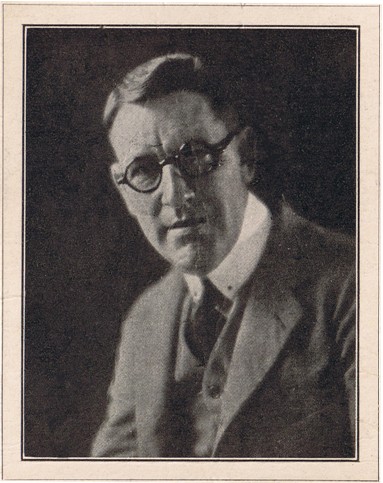
Percy Keese Fitzhugh
Percy Keese Fitzhugh (1876 - 1950) was the author of nearly 100 books for children and adolescents. From 1917 to 1935 he was one of the most popular children’s authors in the United States. Percy was born in Brooklyn, NY on September 7, 1876. He attended Pratt Institute, Brooklyn from 1892 - 1894, pursuing a course in "Regular Art". He married Harriet Lloyd LePorte in Kingston, MA on July 13, 1900. After the birth of their first child, Lawrence in April of 1901,the Fitzhughs moved to New York where they had their second child, Millicent in 1903. By 1910 they were living in Hackensack, NJ. His first known published work, The Golden Rod Story-Book was released in 1906.
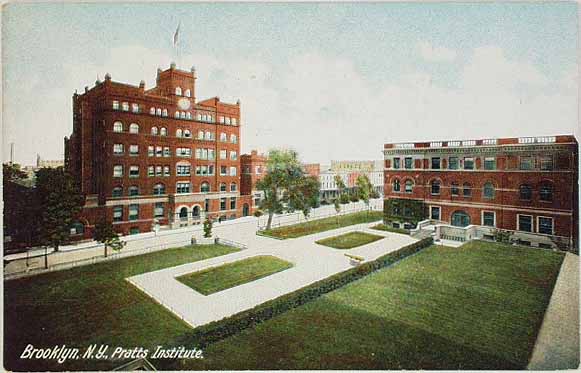
Pratt Institute, Brooklyn circa 1901
It was in Hackensack that his writing carrier began to take off. In 1914, after the release of a silent picture The Making of a Scout, he was commissioned by the Boy Scouts of America to write a book based on the film. That book was Tom Slade Boy Scout of the Moving Pictures, the book that really launched his career.
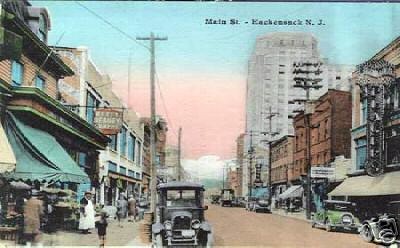
Main Street, Hackensack Circa 1925
The book was an instant success and was followed by a string of several, equally successful volumes. The Tom Slade series gave birth to other series based on the characters from Troop 1, Bridgeboro, NJ. These series included Pee Wee Harris, Westy Martin, Roy Blakely, and several of "The Buddy Books for Boys".
All of these books were hugely popular with boys and girls and even adults.The Characters in his books became so real to many of his readers that the post office in Hackensack was receiving up to 30 letters a day addressed to the imaginary characters themselves. These came along with dozens of letters addressed to Percy. He did what he could to respond to these letters but could never keep up with the volume. At one point, requests for his autograph were so numerous that he finally resorted to replying with the following note printed on a post card:
|
So many letters from readers are received by me that it would be impossible, much as I would like to do so, to send individual replies to all of these and to answer particularly all the questions which are asked by these young friends throughout the country.
One question contained in almost all of these letters may here by answered by the general statement that Tom Slade, Pee-wee Harris, Roy Blakeley, Westy Martin and their comrades, are indeed real boys, being taken from characters in actual life. The reader will understand that the originals of these young heroes cannot be made known to the reading public. But it is a pleasure to state, in answer to the many who have asked, that all of these scouts of the printed page have their counterparts in the real field of scouting.
This autographed card is sent in grateful acknowledgment of your letter, and I take this means, the only means feasible, to thank you for your kind words and your generous interest in my books.

|
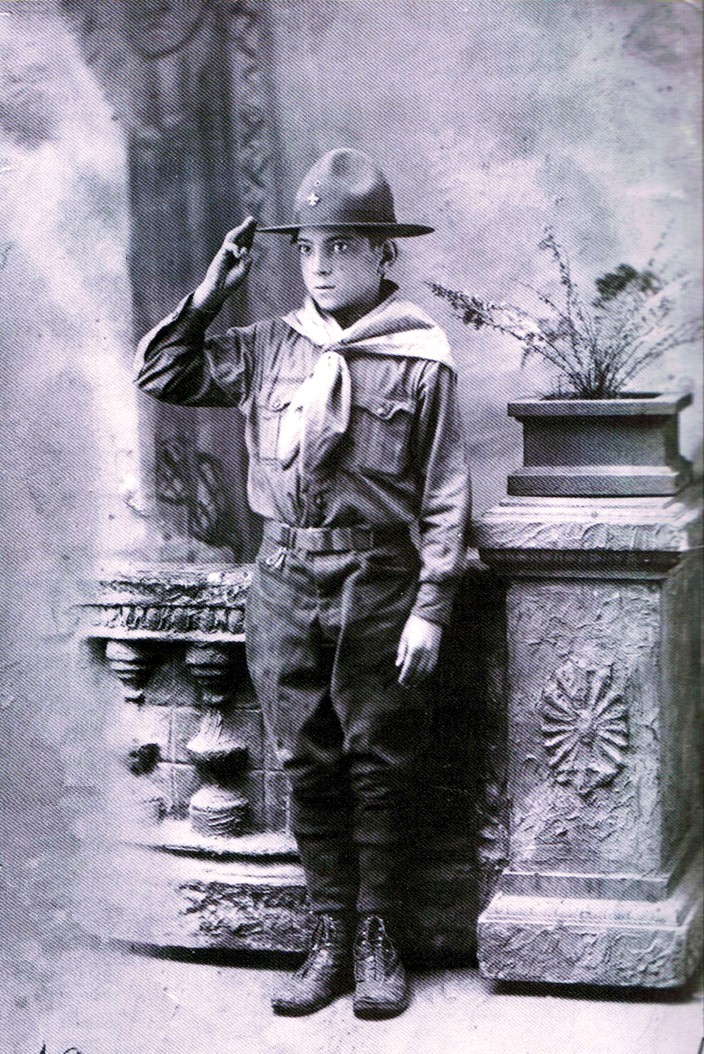
Hackensack Boy Scout circa 1920
The bulk of his work was published by Grosset & Dunlap; in addition, several of his books were serialized and published in Boys' Life Magazine. In all, millions of his Scouting books were published.
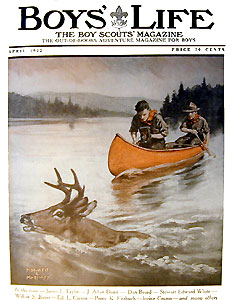
Boys' Life April 1922 with the final episode of Roy Blakeley's Bee-Line Hike (serial) In 1931, he began writing the Hal Keen Mystery series (10 titles) under the pseudonym Hugh Lloyd, also published by Grosset & Dunlap. The Hal Keene books were followed by the Skippy Dare series (3 titles- G&D) in 1934. There was an agreement with G&D for another series - Gordon Stubbs but it appears that no work was ever done on this series.
Mr. Fitzhugh was diagnosed with Hypertensive Heart Disease in 1935, (also known as Hypertension or High Blood Pressure). Shortly after, he contracted Chronic Atrial Fibrillation which caused him to stop most of his activity and all but give up on his writing. His wife always believed that the pressure from his publisher, to continuously produce manuscripts at an unreasonable pace, contributed to his condition. Between 1917 and 1934, he penned over 80 books and an unknown number of short stories and articles. At the height of his popularity, he was turning out 5 to 7 books a year. PKF did continue to write, in small amounts, when he could and was working on a book for adults titled The Walrus in the Barber Shop, it was never published.
While at home, at about 6:30 PM, on July 5th, 1950, Percy Keese Fitzhugh finally succumbed to complications of his long illness and passed away. He was 73. What Mr. Fitzhugh did to promote the Boy Scouting movement can never be measured, but it is safe to say that thousands of boys joined the Scouts because of his writings. Today, his books are sought after by collectors all over the world.
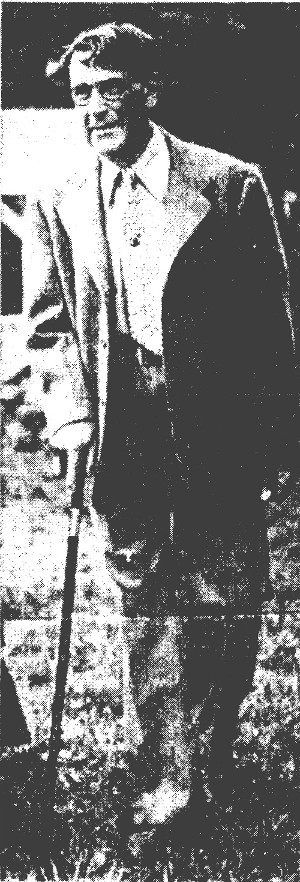
"Some [of my] books sold over a million copies and they have had their day and, like I, have strutted and fretted in the brief hour and now must pass on"
Percy Keese Fitzhugh 1942
HOME - BOOKS - BOOK NOTES - THE FILM - OBITUARIES - TIMELINE - VALUES - LINKS - SOURCES -
CONTACT/HELP - INDEX - STUFF FOR SALE - WHAT'S NEW?
|
